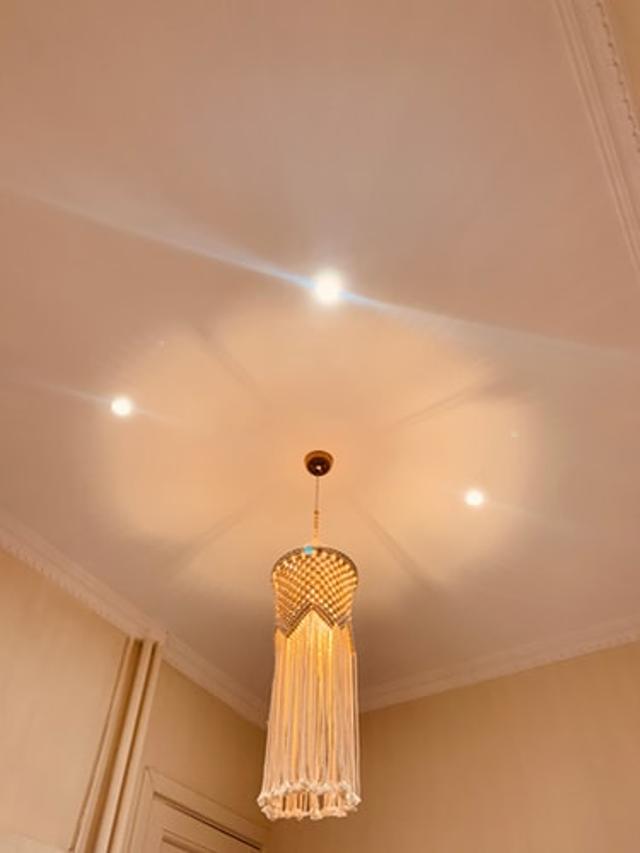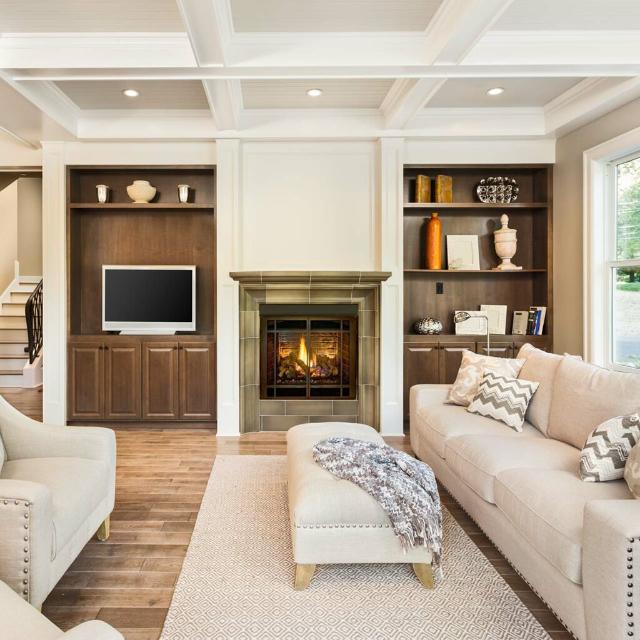Living Room
Ceiling for Living Room
Jul 29 2020
The ceiling is actually acting as three main applications for living room, from physical, statical and architectonic. They will help to stiffen the building and room, while also take up load instead of just for pleasing the eye. Materials available in the market enables insulation against heat, sound and fire resistance. Further to elaboration, the ceiling is integrated into the building as a whole providing either enclosure of overhead or can be left exposed. The lighting and other decoration can also use this part of the structure for their hanging, while an appropriately designed ceiling offer combined aesthetic lighting effect to the room. It comprises of the bare ceiling, top ceiling and sub-ceiling while playing as supportive, floor constructive or just merely to cover underneath of the bare ceiling.
There are ranges of material options can be fabricated for a ceiling, from plaster ceiling, drywall, ceiling tile, wood, metal, aluminium to composite. An overhead surface that used to cover room makes also the underside of roof and floor where hiding is the main goal. The common way to attach the ceiling will be directly fastened to the joists of ceiling or through multiple layers of plywood (remember to always ask the subcontractor to give only moisture-proof to prevent future pipe, slab or roof leaking causing subsequent severe issues to other parts of your house. Always can see that dropped ceiling that is suspended, through the standard installation method from any structural element on top of it. Coving will be surrounded between the wall and the ceiling edges, this uniform mould pieces are also known as a kind of cornice profile.
There are ranges of material options can be fabricated for a ceiling, from plaster ceiling, drywall, ceiling tile, wood, metal, aluminium to composite. An overhead surface that used to cover room makes also the underside of roof and floor where hiding is the main goal. The common way to attach the ceiling will be directly fastened to the joists of ceiling or through multiple layers of plywood (remember to always ask the subcontractor to give only moisture-proof to prevent future pipe, slab or roof leaking causing subsequent severe issues to other parts of your house. Always can see that dropped ceiling that is suspended, through the standard installation method from any structural element on top of it. Coving will be surrounded between the wall and the ceiling edges, this uniform mould pieces are also known as a kind of cornice profile.
Ceiling materials are varied from many, including a ceiling that made by aluminium, composite panel, timber, synthetic, natural to other raw elements. For instance, the gypsum board is one of the materials that is commonly seen to be specified by a designer. The reason gypsum is popular because of its calcium sulfate, this evaporite material manufactured in the market used up a lot in the living room as a false ceiling. First, it can get you more sound insulation from the upper floor or roofing, where it will not bring heavy burden to the structure since it is lighter in weight compared to materials with same strength properties. Other features such as thermal and fire resistance are also important to the comfort as well as safety of tenants, the framework fabricated by iron can use to hang the square gypsum board, while other shapes are still possibly made.
Although gypsum appears to be the top of the list in designer's choice as well as owner's preference, it has some weakness too such as their unfitness for external installation due to its incapabilities to resist against moisture and water. Yet, using it in the living room or other interior of the building is undoubtedly wonderful. Moreover, since the ceiling has its other advantages to hide pipe, electrical wires, conduits, making diverse materials are also lifting their competitiveness in providing more a "Yes" to building owners. Wooden based ceiling that can be used for both exterior and internally to the living room, can be fabricated in the shapes of strip, tile, board and more. The alternative to timber would be vinyl that is lighter but resistant naturally against dampness as well as fibre cement board that is performing similarly with superior durability.
Although gypsum appears to be the top of the list in designer's choice as well as owner's preference, it has some weakness too such as their unfitness for external installation due to its incapabilities to resist against moisture and water. Yet, using it in the living room or other interior of the building is undoubtedly wonderful. Moreover, since the ceiling has its other advantages to hide pipe, electrical wires, conduits, making diverse materials are also lifting their competitiveness in providing more a "Yes" to building owners. Wooden based ceiling that can be used for both exterior and internally to the living room, can be fabricated in the shapes of strip, tile, board and more. The alternative to timber would be vinyl that is lighter but resistant naturally against dampness as well as fibre cement board that is performing similarly with superior durability.
Ceiling design is a topic that has no boundaries just like the sky is never the limit for the creativity, a single plain ceiling, bare concrete ceiling, plastered ceiling, or a mixture of all of them. Material, texture, direction, sunlight, colour, lighting decoration and more can change the overall theme of the ceiling. Country-oriented or specific building imitation to religious-based ceiling art can work out the best from the best to impress visitors, making your own living space the attractive selling point for more friends and families gathering. People tend to be attracted by certain authentic product and therefore, many crafted ceiling patterns by either manual man's hand or automated production line are still survivable regards of the modern world or in the ancient stories. The living room is a place where all step in the first, before any other rooms after the main entrance, at least, normally in a typical house.
The ceiling can be mass-produced just like other building materials, but it could also be applied by a plaster ceiling installer, it can be science as well as art. With the right skill, the ceiling finished surface will be completed as attractive as possible. Nowadays, we can see there are ceiling designs comprising of the regular ceiling, shed ceiling, beamed ceiling, cathedral ceiling, vaulted ceiling, tall ceiling, barrel vault ceiling, tray ceiling, a dome ceiling, groin vault ceiling in addition to the conventional suspended and exposed ceiling. Of course, when you put ceiling designs into country-based it can combine these with colour, lighting concept, pattern, height, size and materials. For instance, rustic feel, Chinese, French, Arabic, European, Asia, Modern US and many more. Brightness, colour tone, material nature will create an even deeper way to elevate the intended ceiling style.
The ceiling can be mass-produced just like other building materials, but it could also be applied by a plaster ceiling installer, it can be science as well as art. With the right skill, the ceiling finished surface will be completed as attractive as possible. Nowadays, we can see there are ceiling designs comprising of the regular ceiling, shed ceiling, beamed ceiling, cathedral ceiling, vaulted ceiling, tall ceiling, barrel vault ceiling, tray ceiling, a dome ceiling, groin vault ceiling in addition to the conventional suspended and exposed ceiling. Of course, when you put ceiling designs into country-based it can combine these with colour, lighting concept, pattern, height, size and materials. For instance, rustic feel, Chinese, French, Arabic, European, Asia, Modern US and many more. Brightness, colour tone, material nature will create an even deeper way to elevate the intended ceiling style.
Ceiling Materials
Ceiling Style
False Ceiling
Bare Ceiling
Texture Ceiling
Shed Ceiling
Tray Ceiling
Beam Ceiling
Explore here for Ceiling Ideas, Materials and Contractors in Malaysia.










